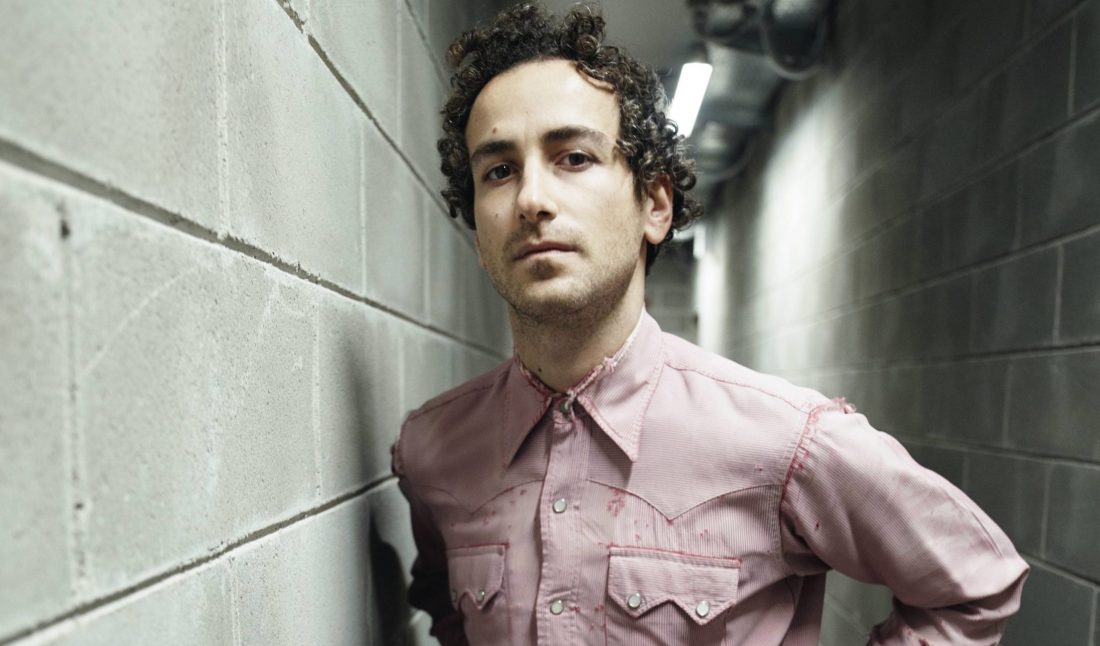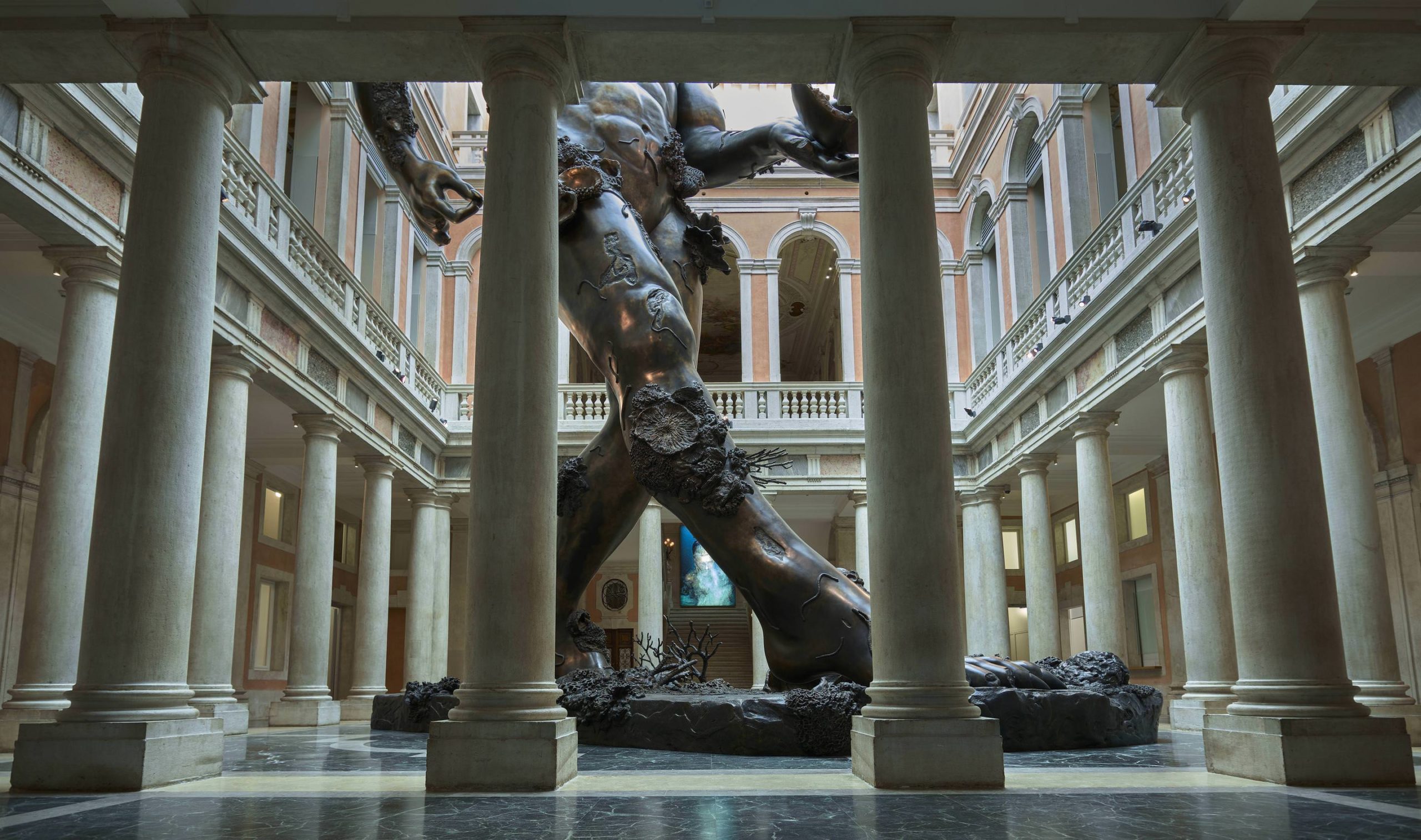Since fall 2018, Marni has been debuting new boutique designs in Florence, New York, Paris, and soon Rome. Each flagship is unique, designed around the architectural details of its site and paying tribute to a variety of artistic movements. The new retail concept aims to create even more of an experience for the brand’s devoted fans.
If you love Marni’s signature playfulness like we do, you’ll love the surprising colors, shapes, and bold design choices at every site. And specific to each city is a limited offering of adorable papier-mâché animals—a hen in Florence, a fawn in New York, a rooster in Paris, and a bull in Rome.
Whitewall spoke with Marni creative director Francesco Risso about creating a new kind of retail experience, and the enduring charm of the Italian fashion house.
WHITEWALL: What kind of tone did you want to set with the new stores?
FRANCESCO RISSO: This year marks the beginning of a series of important openings in key cities. It represents a big moment for Marni. Each boutique pays tribute to different artistic movements through subtle unique architectural details that make each of them one of a kind. Marni has always been linked to creativity and the world of art, and the interior design reflects this natural inclination. Marni is also the temple of playfulness, so we took the occasion to celebrate these new stores by creating some ironic animal papier-mâché sculptures that identify each city.
WW: How does the location of each city affect the design?
FR: Each store is integrated with the characteristics of the city that hosts, staying loyal to Marni’s essence, which is based on an experimental approach to materials and colors. The boutiques feature elements that are part of Marni’s visual identity, together with architectural details that highlight the peculiarities of each building.
WW: What is the role of retail today for a luxury brand?
FR: The boutique is the place where you get in touch with the brand in a deep way: its vision, its codes, its values, and of course, its collections. Nowadays it is crucial to give a full experience to the customer, creating a relationship with him that is built on the same shared values and the same frame of mind. This relationship begins a long time before entering the boutique.
WW: How does Marni’s spirit of playfulness, dynamism, and outsider status translate into materials, colors, and shapes in the new stores?
FR: The new stores represent an important element of the aesthetic paradigm of Marni. Its experimental approach embraces the choice of colors, the juxtaposition of different shapes and volumes, the combination of precious materials, and the artistic quotes that identify each location.
WW: The New York location is full of color, surprising shapes, and whimsical details like Marni’s signature wave steel rails. What is the story you wanted to tell there?
FR: The New York boutique is a subtle, elusive tribute to Pop art and to the iconography of the Big Apple. It has its own peculiar mix of shapes and materials, where geometry and colors dominate the space.
WW: Each new store also features a limited-edition, location-exclusive papier-mâché animal made by the women of Villanueva, Colombia. Can you tell us more about this ongoing collaboration? We saw some of this in Milan during Salone del Mobile.
FR: The series of animal sculptures we created are the result of the handmade work of a community of women from Villanueva in Colombia, who created them in an artisanal way, using papier-mâché and beads. Each of them requires four days of work; each is unique as a piece of art.
WW: How do you see these animals and past projects like Happy Birds (which sold Colombian artist–created metal bird sculptures to support the Vimala Association) fit into Marni’s overall story?
FR: Marni has a natural playful side that finds one of its ways of expression in these special projects, such as the Marni Markets, Salone del Mobile, and charity initiatives. For many years, we have collaborated with communities of Colombian artisans and women that create limited-edition products, gaining independence and freedom through their work.
WW: You also are working with artists for each city to create videos around the new store openings. How did you choose the artists you want to work with?
FR: I discovered their works through exhibitions and social media. The research has been long and funny. We collaborated with BlinkMyBrain for the video Finding Rome; with artist Alan Fears for A Rumble in the Jungles of Paris; with Matt Blease for Wandering in Florence; and with Belgian artist Sammy Slabbinck for the video NY Discovery, dedicated to New York.
WW: We know you’re a fan of art and design, as well as film. What’s something you’ve seen recently you’re still thinking about?
FR: Often I have kind of obsessions for certain authors, and it happens that I watch their entire filmographies or I read their whole bibliography. At the same time, I have constant sources of inspiration or works that accompany my life, like John Waters’s Role Models.
WW: In a past interview, you said, “I’m not about sharpness, I’m more fluid and tender.” Why do you think that is? How do you see that translate into your design?
FR: I appreciate things that tell stories. This pushes me to interpret everything I create through a narrative path that can take different forms. From the initial idea, the design evolves, becoming something new and unexpected. Starting from this beginning, I often obtain surprising results.
WW: Marni has always been defined by a sort of outsider spirit. How are you navigating that spirit as a creative director in today’s luxury market?
FR: Marni follows its own paradigm, giving its interpretation to things that always changes, being new and experimental. Marni is a state of mind, where personality is the only thing that matters.











